When the 2015 Dodge Challenger SRT® Hellcat and 2015 Dodge Charger SRT Hellcat were introduced, they revolutionized the American automotive performance world. The two supercharged Dodge cars were the first American production road cars with more than 700 horsepower, comfortably surpassing the top competitors from their Detroit rivals and allowing the Brotherhood of Muscle to go head-to-head with some of the world’s top exotics for a fraction of the price. However, it wasn’t just the new car market and modern performance world that were forever changed by the introduction of the SRT Hellcat HEMI® engine. The SRT Hellcat cars also had an indirect impact on classic car builds as well.
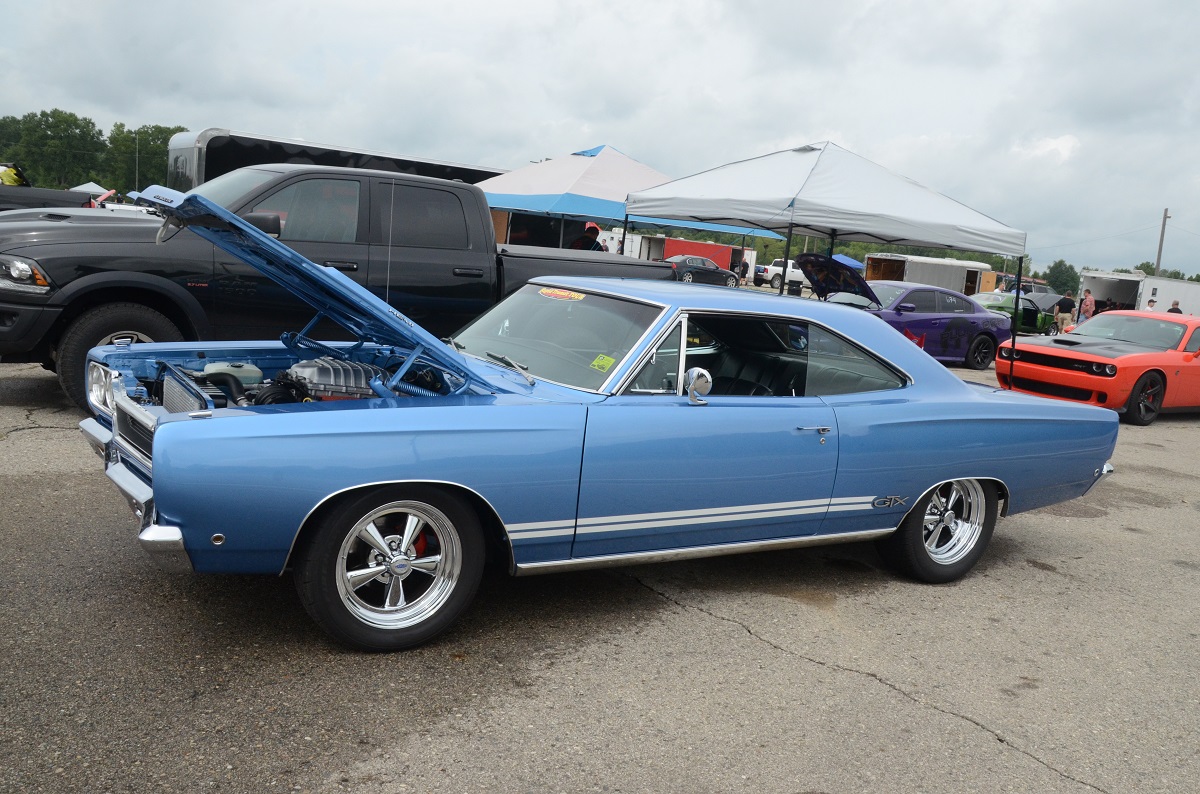
It wasn’t long after Dodge began delivering SRT Hellcat cars that we started to see SRT Hellcat HEMI engines being transplanted into classic Mopar® muscle cars. The first SRT Hellcat-powered classic that I saw in person was a 1968 Plymouth GTX (shown above) built by John Gaddy and it is still one of the nicest classic Hellcat-swap cars I have seen in person. After that build, Gaddy Hellcat-swapped two more B-body classics – a 1969 Dodge Coronet 500 9-passenger station wagon and a 1969 Dodge Super Bee. Both of those cars are truly show-quality and the odds are good that you have seen one, if not all three, somewhere on social media. However, Gaddy noticed that the vast majority of people building Hellcat-swapped classics were focusing on B-body and E-body models, so with his latest project, he wanted something that was unlike anything that the community had seen.
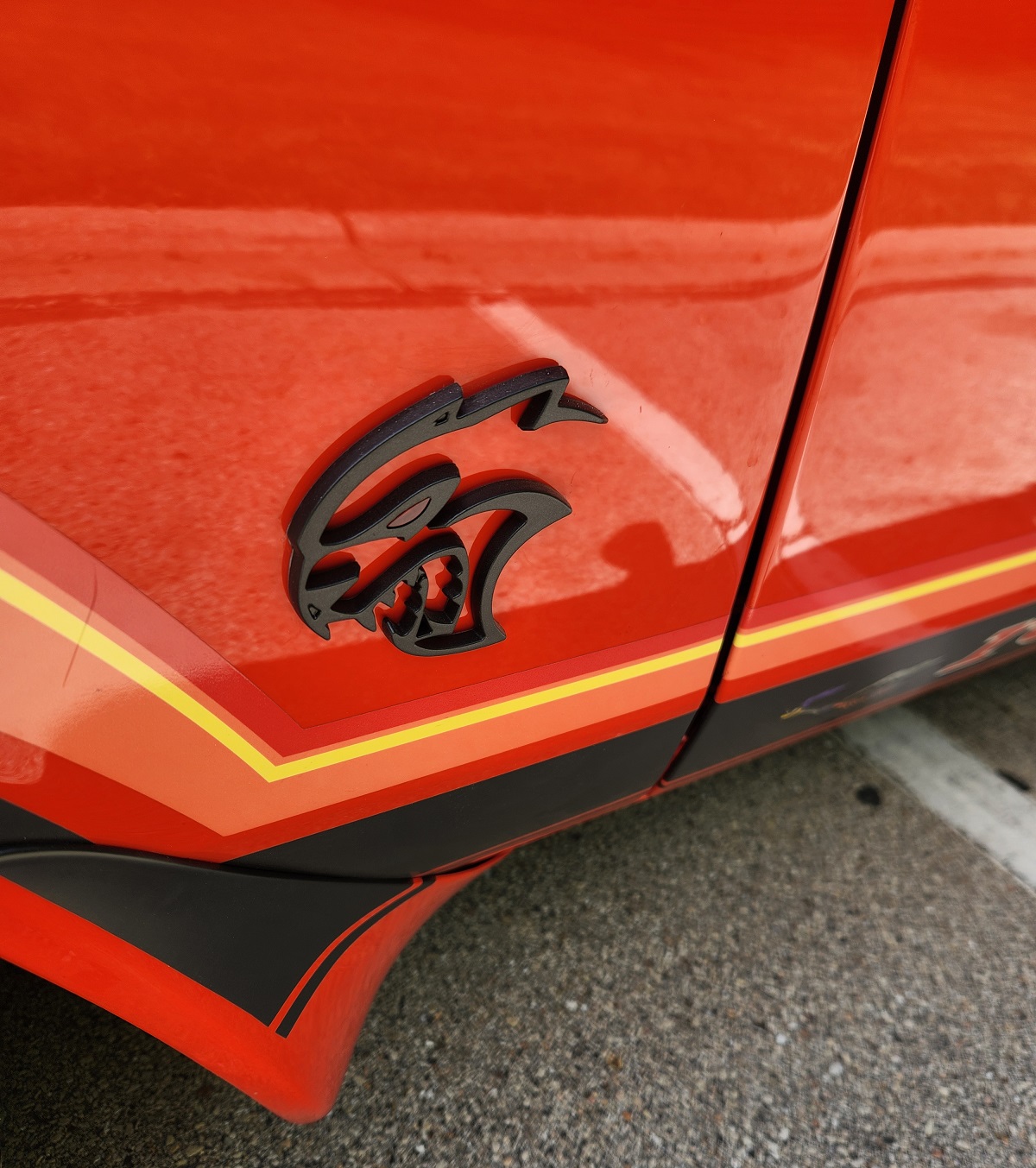
“I have yet to see another Hellcat-swapped F-body. I do know of a 392-swapped car and a couple 5.7s. I have also heard of a Hellcat going into a Dodge Aspen, but this is the first completed. This was one of the biggest draws to doing an F-body. Nobody else has done one, and I like the “different” cars now. I have been into Mopar muscle cars since 1992, and it’s getting boring looking at the same ’69 Chargers and ’70 Challengers at every show. I now walk right by those to look at cars like this 1977 Roadrunner.”
While Gaddy set out to put an SRT Hellcat HEMI engine (an SRT Hellcat Redeye HEMI engine, to be exact) in an F platform car, he had initially planned to perform that swap on a 1978 Plymouth Volare Richard Petty Street Kit Car. If you are unfamiliar with the Richard Petty Street Kit Car, it is a Volare with decals that make it look like one of Petty’s NASCAR racers. Those cars were extremely rare, with just 247 built back in the late ‘70s, but they also came with fender flares that Gaddy didn’t like, so he sold that car and purchased the 1977 Plymouth Volare Roadrunner shown here.
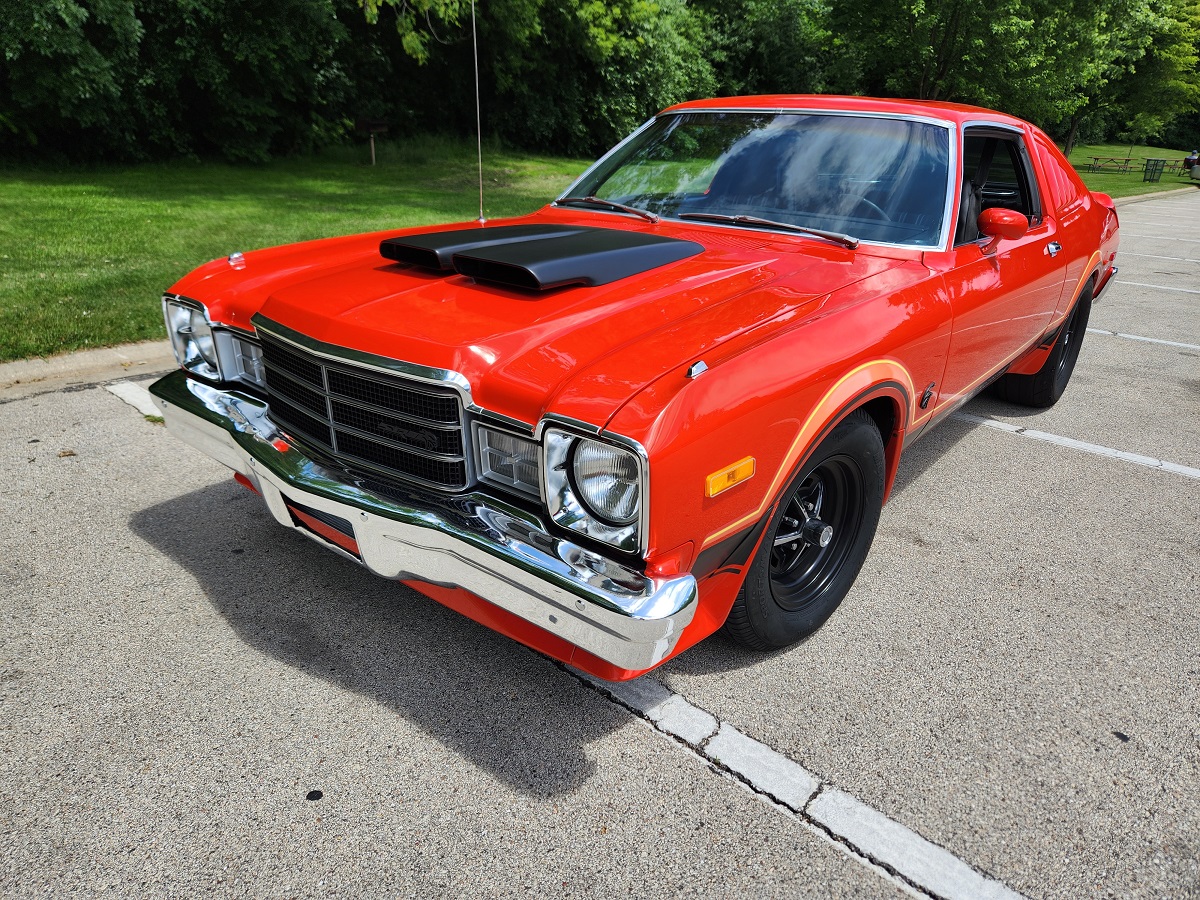
“I originally had purchased a 1978 Plymouth Volare Richard Petty Street Kit Car to do a G3 HEMI Swap. Very rare care as only 247 were built. The example I had was very nice, but I just couldn’t get by the chunky looking flares they installed on those cars. To me, they look like Bushwacker 4×4 truck flares. The car I ended up purchasing is a 1977 Plymouth Volare Roadrunner. The car is an original 360, console automatic car. It also has the very rare moonroof option. I purchased this car at the 2023 Mopar Nationals in Ohio. The car was a finished running, driving car built by Ken Flowers.”
As mentioned above, Gaddy’s 1977 Plymouth Roadrunner is powered by an SRT Hellcat Redeye engine, which is a low-mileage takeout from a 2022 Dodge Challenger. For headers, Gaddy used 1-7/8-inch Holley “swap headers” that are intended for a 68-72 B-body, which are mated to a custom 3-inch exhaust system from Sebena’s Automotive in Kenosha, Wisconsin, featuring an X-pipe and Dynomax Ultra Flow mufflers.
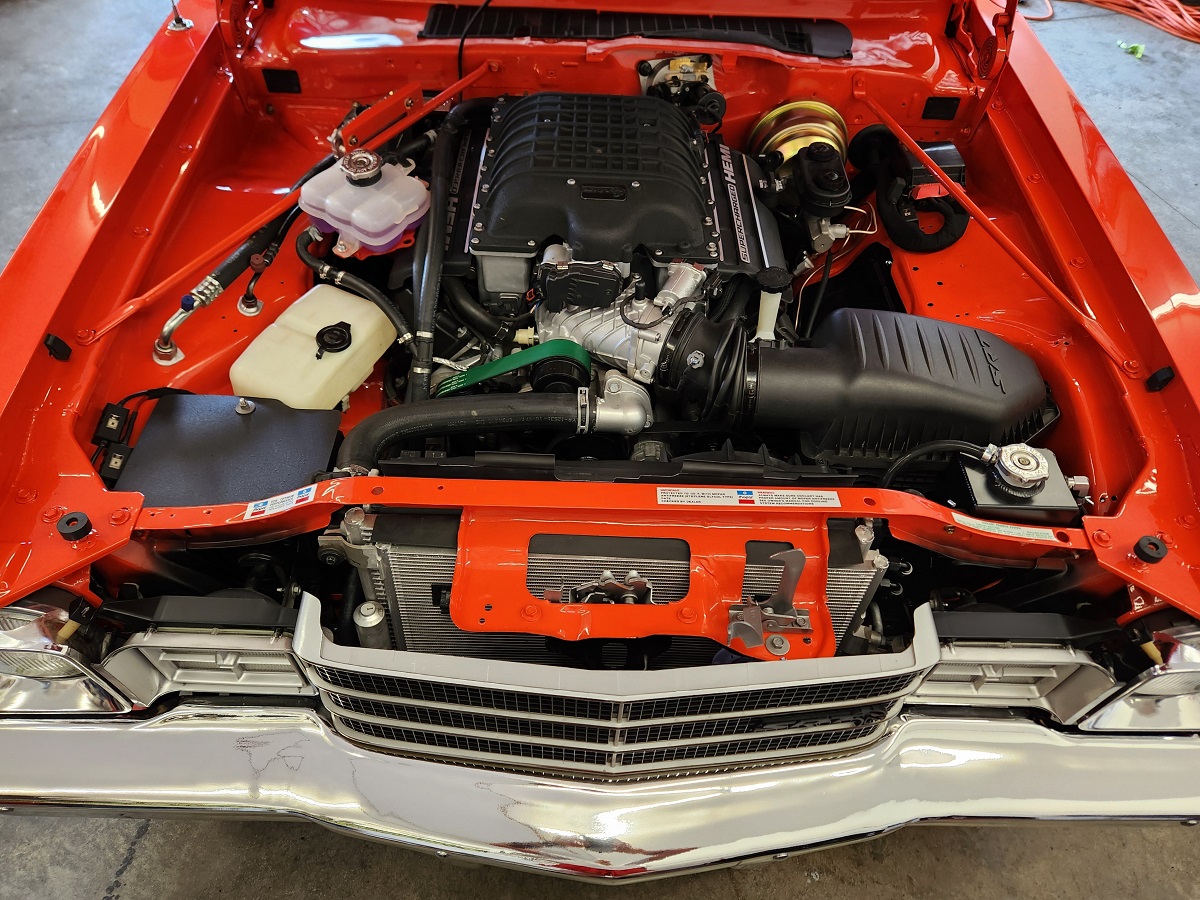
In standard form, this engine delivered 797 horsepower and 707 lb-ft of torque, but an ATI 10% lower pulley adds a bit more boost and with that extra boost, Sumit Goyal of 1320Tunes will write a custom engine tune to make even more power. To properly accommodate that custom engine tune with the extra boost, Gaddy outfitted this F-body with Aeromotive fuel system and dual TI Industries fuel pumps inside of the modified factory fuel tank. Right now, the car is running on gasoline, but he plans to begin using E85 in the future, along with “experimenting with water/methanol injection at some point.” In short, Gaddy’s 1977 Roadrunner is making well over 800 horsepower and it is set up to make even more in the future. Gaddy used the factory air conditioning system in conjunction with the Redeye factory cooling system.
That engine is mated to the factory 8-speed automatic transmission from the modern muscle car as well, and Gaddy incorporated the factory shifter from the Challenger into the factory shift console of the Roadrunner. Engine electronics are controlled by the Direct Connection Redeye Crate Controller kit while the PCS trans controller supplied by Russell Drake at Sound German. A Drivetrain Industries 4-inch aluminum driveshaft and a Ford 9-inch rear differential with 3.00 gears built by Cass at Dr. Diff send the HEMI engine power to a set of 15-inch Wheel Vintiques Magnum 500 wheels. Those vintage-look wheels are wrapped in Mickey Thompson rubber, with 215/70 radials in the front and 275/60 ET Street SS drag radials putting the power to the ground out back.
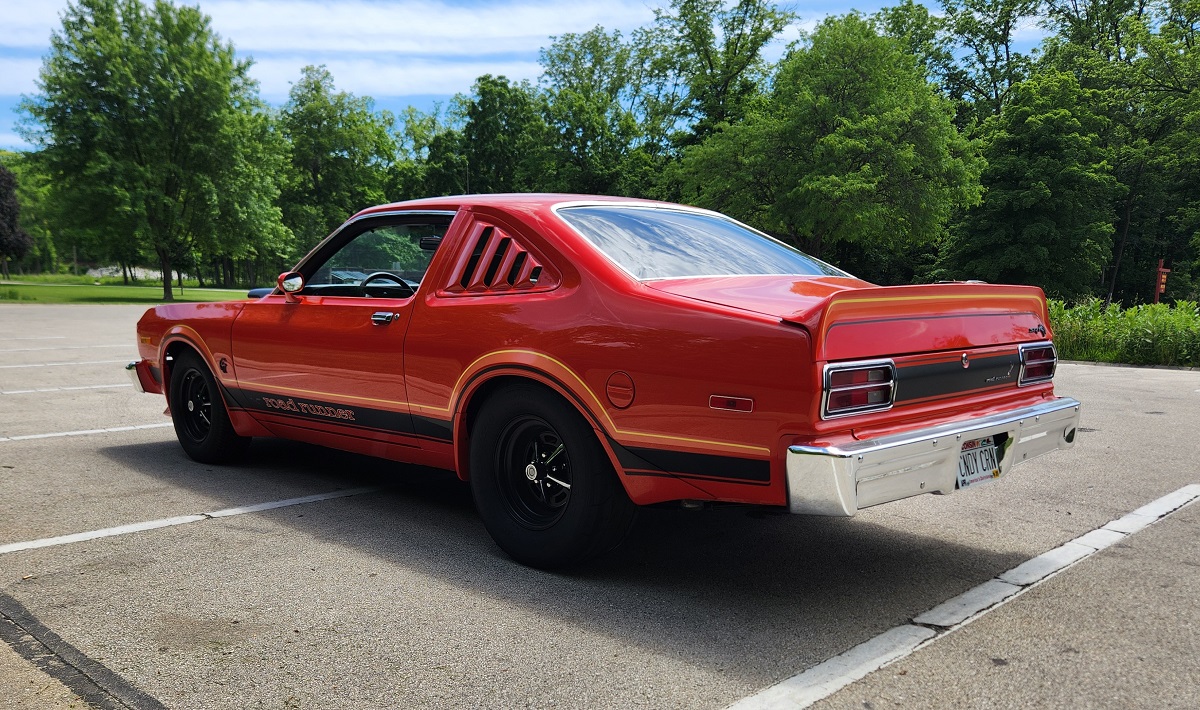
Other mechanical features of this Redeye-powered 1977 Roadrunner include four-wheel disc brakes, Firm Feel front and rear sway bars, Bilstein shocks, Cal Trac traction bars and factory leaf springs.
On the outside, the only real physical alteration made to this 1977 Plymouth Roadrunner is the twin snorkel hood scoop that he added to cover the hole in the hood, and that hole was necessary for the supercharged HEMI engine to fit under the stock hood. He also added 35% tint to the windows along with the Redeye badges on the fenders and the SRT Hellcat Redeye badge on the rear spoiler, but beyond those appearance items and the hood scoop, this 1977 Plymouth looks very much like it did when it was brand new – it is just a whole lot more powerful.
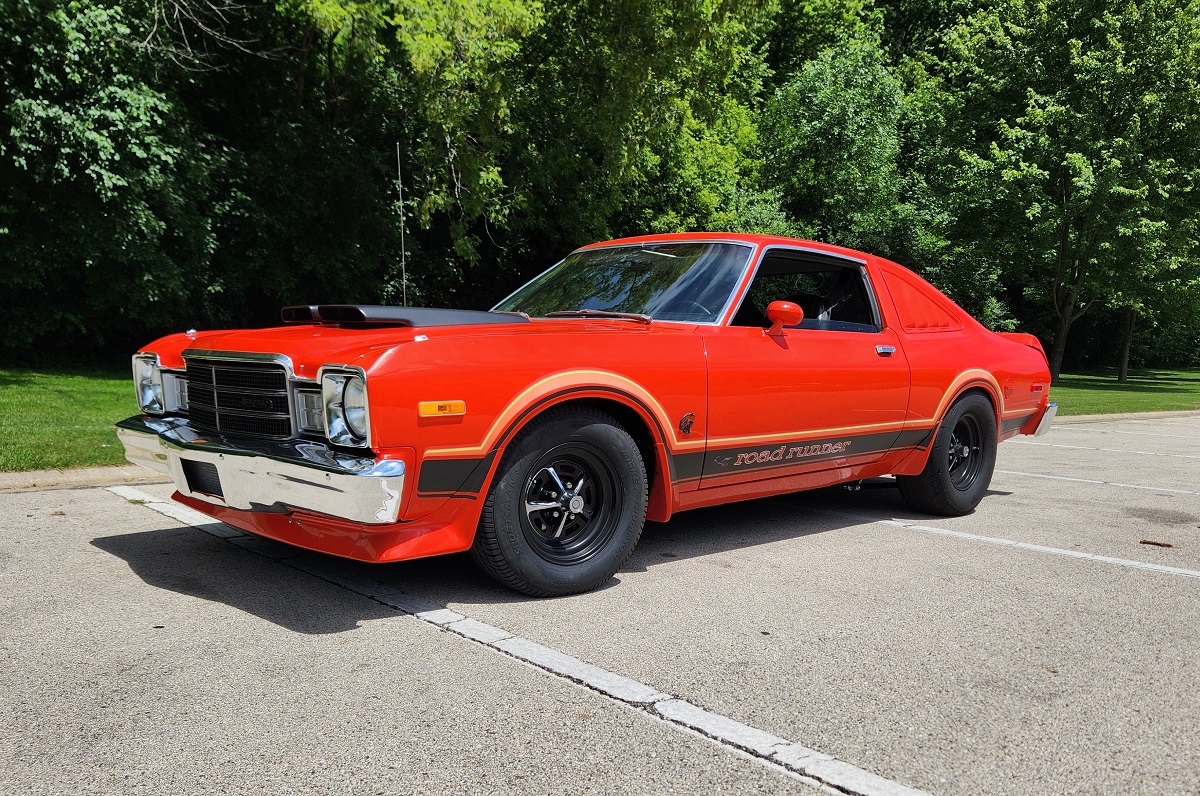
“I did not add any other ‘modern’ components,” said Gaddy. “In all my builds, I try to keep the original personality of the car I’m building. I really don’t want it looking like a new Hellcat, if that makes sense. I want to be able to close the hood and it could be mistaken for a factory 1977 Roadrunner build.
“I applied for a personalized vanity plate through the state of Wisconsin that reads “CNDY CRN”, which means Candy Corn. These cars are said to represent the look of candy corn because of the color combination, and numerous people like to apply that moniker to these cars.”
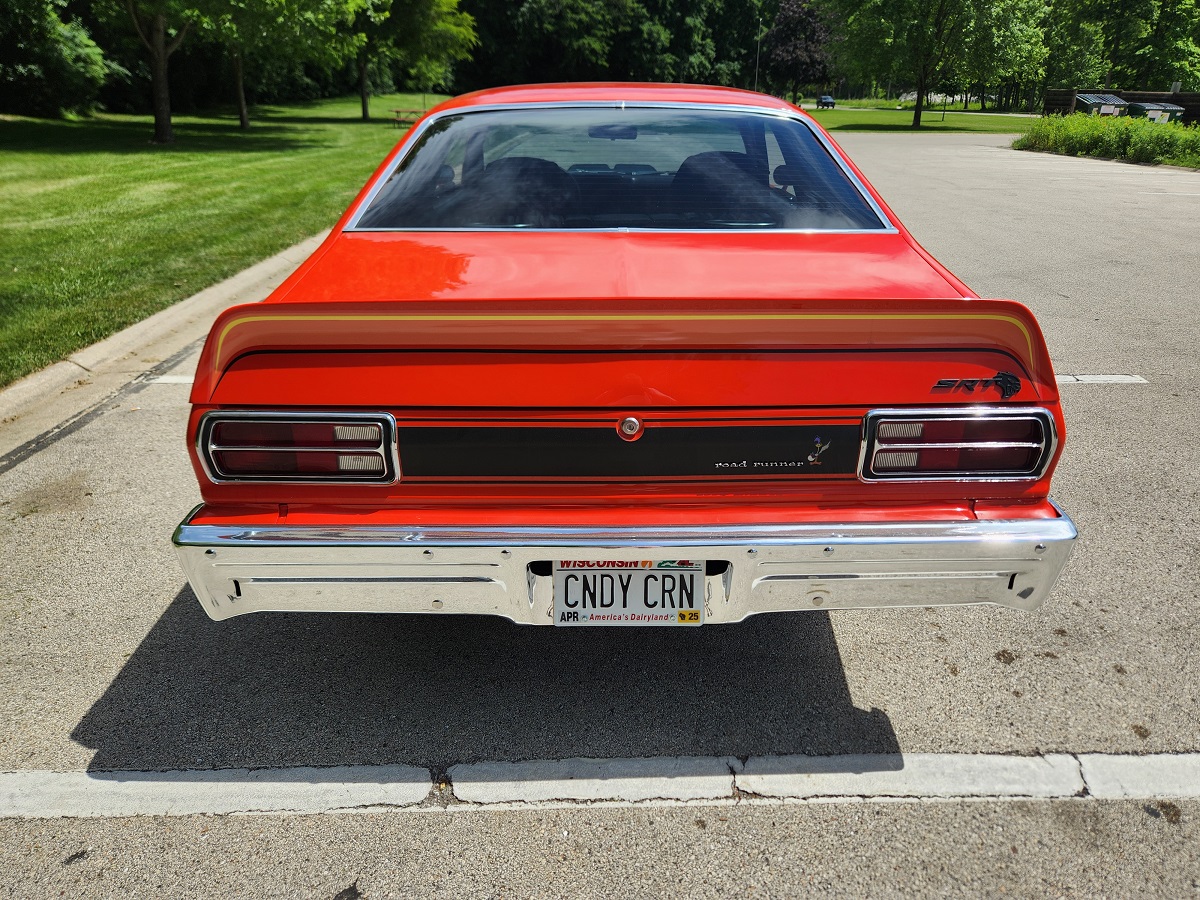
On the inside, John Gaddy added a Dakota Digital gauge cluster that is nestled perfectly into the factory dashboard layout. He also added a modern sound system, but it is mounted in a way that maintains the factory appearance.
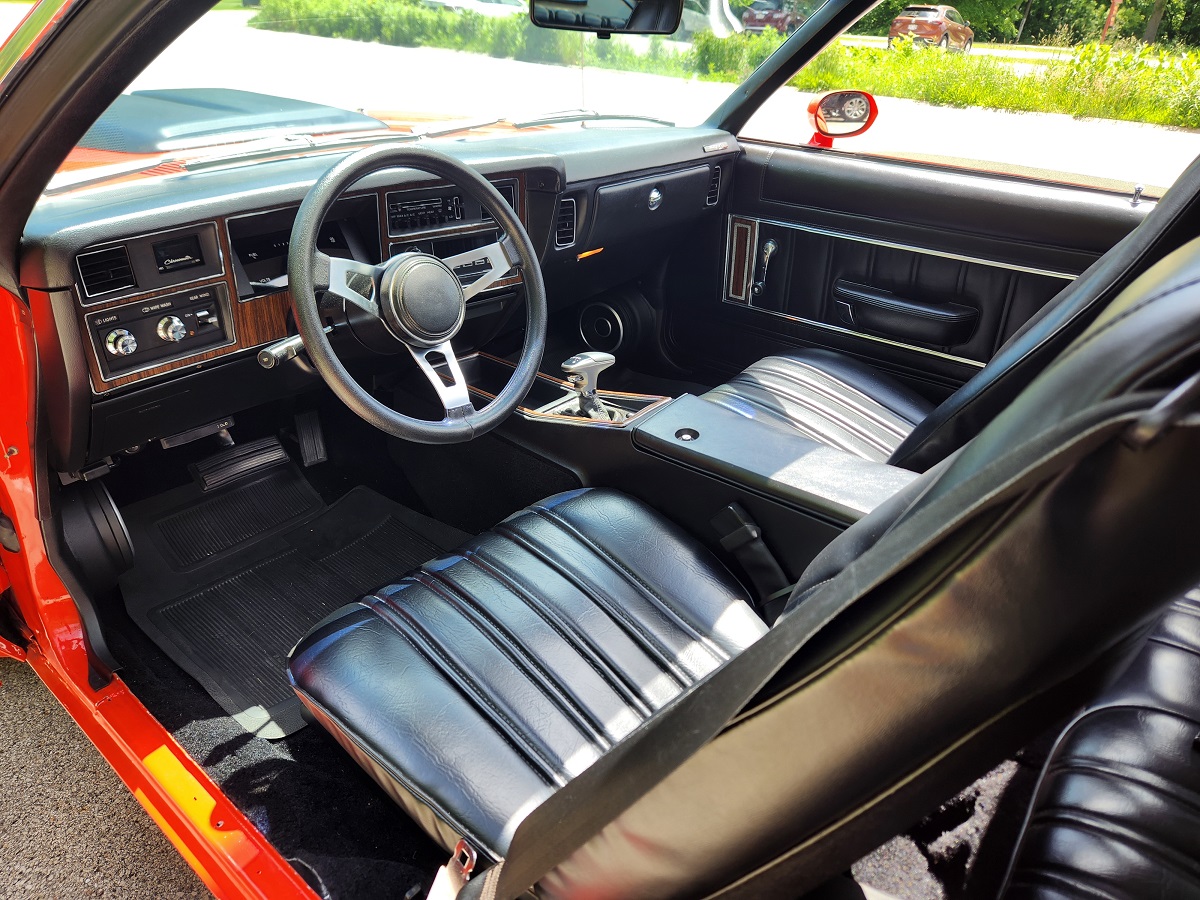
“I wanted to do a good stereo in this car, so I installed a factory-looking head unit along with 3.5-inch speakers in the dash, 6.5-inch custom made kick panels, and 6×9 in the rear package tray. A 10-inch powered subwoofer sits under the driver seat. All speakers and amplifier are JBL pieces except the Kicker sub. Total wattage is 500 for the complete system.”
While John Gaddy’s experience with Gen 3 HEMI engine swaps allows him to build some incredible machines without many headaches, this build was a bit more detailed than others, taking about 10 months from start to finish.
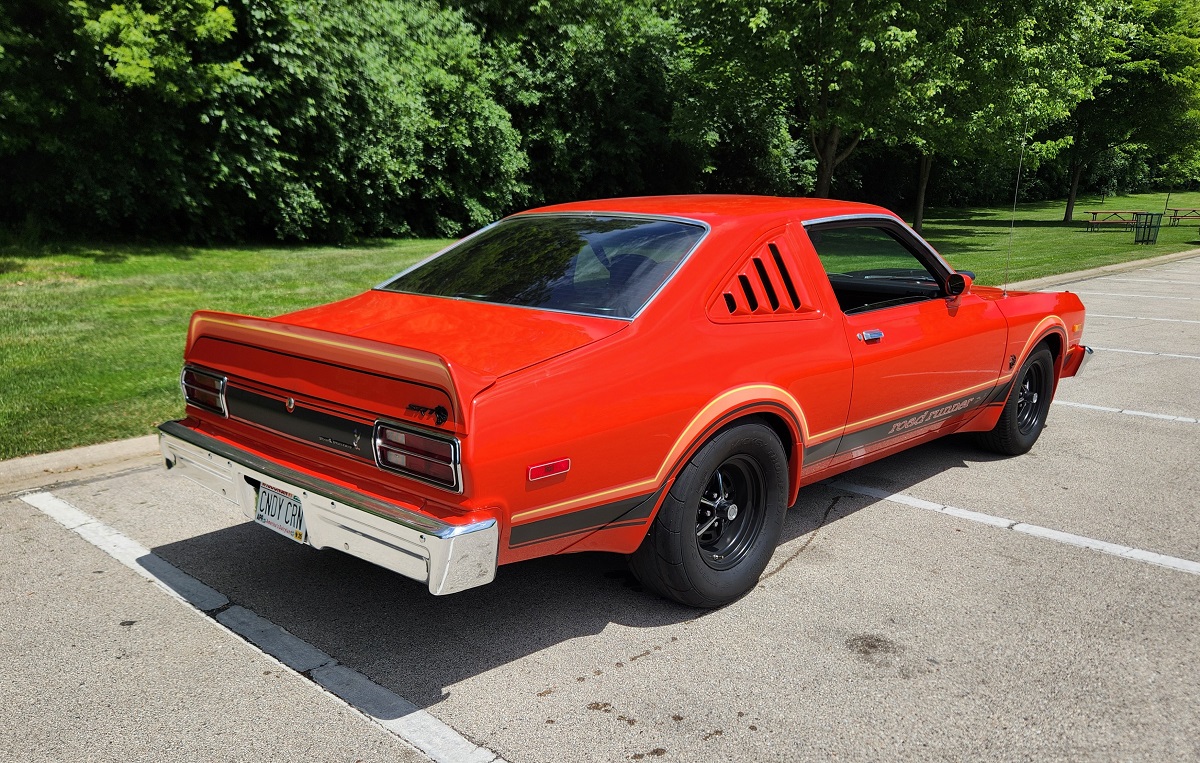
“I don’t find any of these swaps ‘difficult’. Some require more thought and may be more time consuming. I can do a ’68-’70 B-body in my sleep, but the F-bodies are assembled differently, and required some planning and thought.
“In order to fit the drivetrain, I had to completely reconstruct the entire transmission tunnel, as well as notch and box the front passenger frame rail for alternator clearance. I took the time to install frame connectors and torque boxes from USCT while doing the fab work. Using a combination of Holley A-body and B-body swap components, the engine and trans sit in the factory location.”
Gaddy has been driving his 1977 Plymouth Roadrunner on the street and while he still needs to do some more tuning, the car is running, driving and looking great.
“I plan to debut the car at the Chryslers at Carlisle show July 12th in Pennsylvania. That is about a 1,300-mile round trip for me, and I don’t own a trailer. Other than that, if the sun is out, I use my cars. I run errands, I drive to work, grocery store, etc. … I use it. This car may see some racing, as well. While I won’t advertise it for sale, this will be a car that can be bought. Sometimes I think I enjoy building them more than having the completed car in front of me, so it may be on to the next one.”
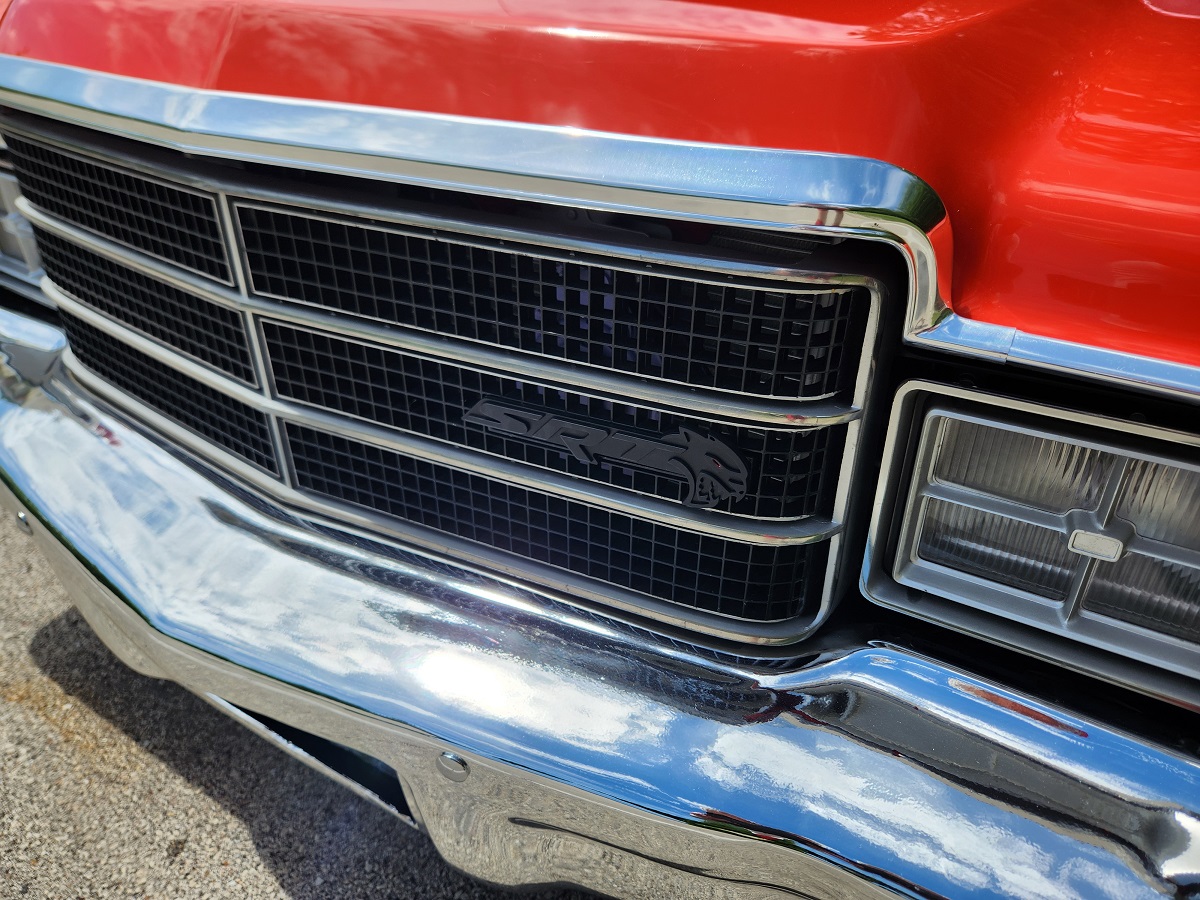
We mentioned above that this Redeye-powered F-body build took about 10 months, but we want to point out that John Gaddy does not work at/run a garage for a living. He has a day job and he works on his builds in his spare time, and he turns out some absolutely stunning cars. To have a hobby like this, it is important to have patient family members, so his wife and kids are the first people Gaddy thanks when discussing this project.
“Thanks to my family … Heather and my daughters Stella and Olive. They allow me to work crazy hours to afford to build this stuff and that isn’t taking into consideration the time to actually build it. I also want to thank my friend Steve Yaklin. He is always there to chat about cars, and is the voice of reason when it comes to part of the build process.”
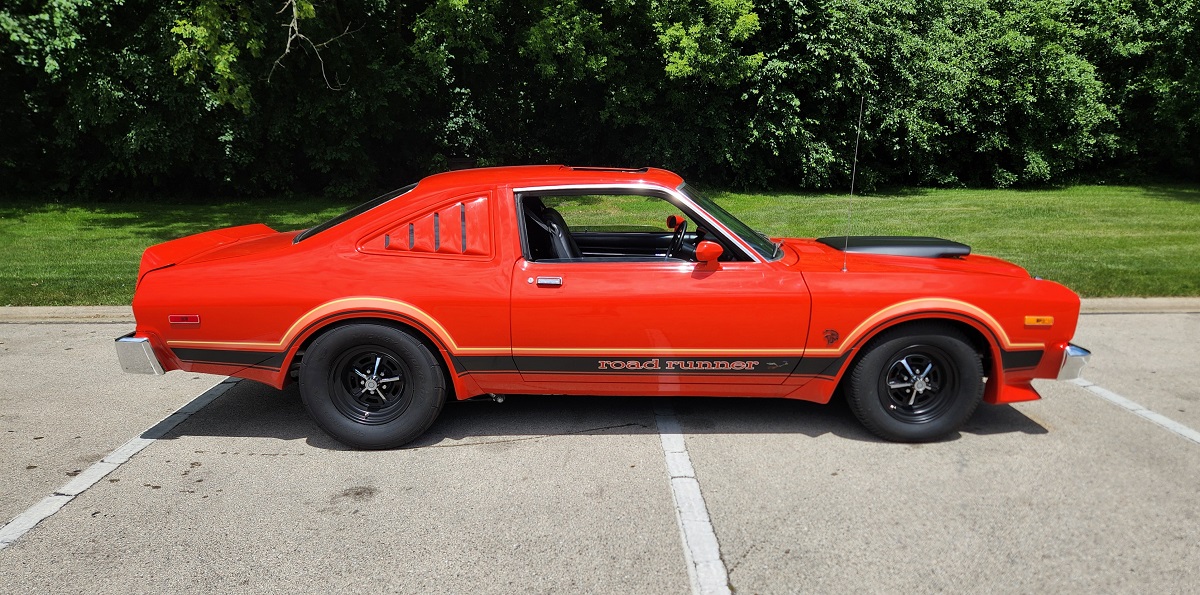
If you are heading to Chryslers at Carlisle, you will be able to check out this 1977 Plymouth Roadrunner in person, but based on how much Gaddy drives his SRT Hellcat-swapped 1968 GTX, the odds are good that it will turn up at more events in the future. The Roadrunner is arguably the coolest of the Mopar F platform and, as factory-looking cars go, John Gaddy’s SRT Hellcat Redeye-powered build is one of the coolest of the F-body Roadrunners.
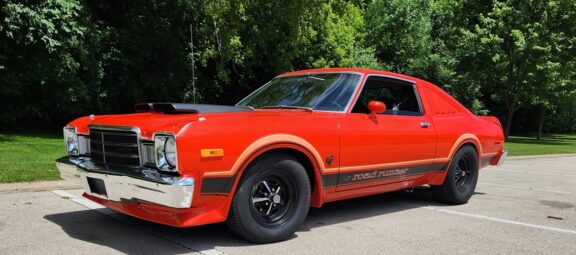
0 Comments